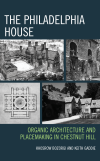Zusammenfassung
At the very beginning of the interwar period, a small collection of formally trained architects created a distinctive residential type which can undoubtedly be recognized as a Philadelphia landmark. They surpassed the conventional pseudo-classic or neo-Gothic eclectic solution by a unique adaptation of the principles and criteria of design to suit the expression of the exclusive cultural tradition of the clients and to respond to the natural environment.
The works of three Philadelphia architectural firms -- Mellor, Meigs and Howe, McGoodwin, and Willing and Sims -- are analyzed to explore this proposition, using six houses constructed between 1917 and 1928 as a basis. These homes and others located in the historic Chestnut Hill neighborhood are aesthetically pleasing. But they also represent a break with the past, the emergence of a new ‘type’ which is among the architectural design innovations of the last century generally conceived as ‘organic’ architecture. This work, which contains over 200 photographs and drawings, considers the houses, the training and development of the architects, the creation and development of Chestnut Hill itself, and the larger, distinct culture of Philadelphia in contributing to the emergence of this distinctive and lasting style.
Schlagworte
Germantown Neo-Norma Architecture Philadelphia House Philadelphia architecture Willing Sims Chestnut Hill twentieth-century design organic architecture Medieval revival Mellor Meigs Howe historical nonfiction books for architecture enthusiasts- i–xxviii Preface i–xxviii
- 327–336 6: Conclusions 327–336
- 337–338 Afterword 337–338
- 339–346 References 339–346
- 347–362 Index 347–362
- 363–364 About the Authors 363–364

